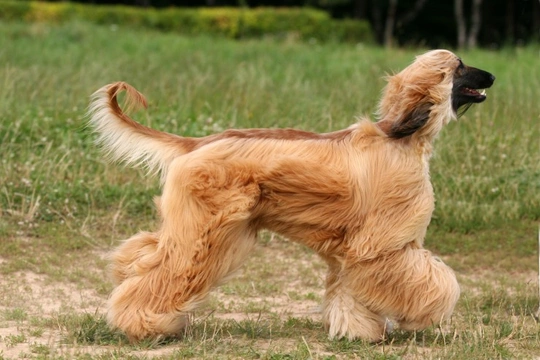
How can you tell if your dog’s coat is healthy and at its best?
When we think of a healthy dog coat, we tend to think of the long, shiny and glossy locks of breeds like the Irish setter or Afghan hound, both of which are highly distinctive and always turn heads thanks to their beautiful long, flowing fur!
However, whilst a coat of this type will look very obviously healthy when in great condition, not all dogs have the type of coat that is sleek and glossy naturally – and shorthaired, rough-coated and curly-coated dogs can and usually do have lovely healthy coats even though they might not turn heads as much as those dogs that look like shampoo adverts!
Whatever type of coat your dog has in terms of its length, texture, curl and thickness, it is important to be able to tell if their coat is in good condition and healthy, and not only because this will make your dog look good.
The condition of your dog’s coat, and how healthy or otherwise it is can tell you a lot about their health and wellness in general – and how suitable their diet is, and if anything else is amiss too.
In this article, we will look at how you can assess the quality of your dog’s coat and how healthy it is – regardless of the type of coat your dog has.
Your dog’s coat texture
Dogs that have long, straight fur will normally have a light sheen to their coats when it is healthy and clean, and coats of this type tend to require a lot of care to keep them in good condition, with daily brushing and grooming and regular baths.
Dogs with short, single-layered fur will also generally look glossy when their coats are in good condition, but require a lot less attention – although all dogs can benefit from regular brushing, to massage the skin and stimulate hair growth.
Dogs that have a rough or broken coat won’t have a noticeable glossy sheen to their coats, but their coat should still be clean, strong and in good condition.
Dogs that have an undercoat, or more than one different type of fur in their coats – breeds that have a dense, fluffy lower layer of fur and more resilient, harsher fur on the top can be more of a challenge. Grooming dogs of this type can take up a lot of your time, but again, their skin and coat should look and feel clean, and not be greasy, tacky or knotted.
How much your dog sheds
Some dogs shed more than others, and so there is no one size fits all answer to how much shedding is the norm. Certain dog breeds tend to shed quite heavily throughout the year, and most breeds will shed more in spring and autumn, when the seasons change.
Learning about what to expect from your own dog’s coat in terms of when and how much it will shed will help you to identify any problems, and excessive shedding or losing fur in patches or clumps is invariably a sign of a problem.
Certain dog breeds don’t tend to shed fur hardly at all – this generally refers to breeds with very densely curled coats, whose hair remains trapped in the curls when it does come out, which means that you will need to bathe, comb and potentially clip them to keep their coat healthy.
The quality of your dog’s fur
Whatever type of fur your dog has, it should be strong and healthy, not prone to snapping, splitting or becoming weak on the ends. Split ends can present in your dog’s fur just as it can in human hair that is overly long or in poor condition, so this is something else to look out for.
If your dog’s fur tends to snap off easily or is brittle when you rub it, they may require a change of diet to something that is more appropriate to support healthy hair growth.
The way your dog smells
A dog’s coat shouldn’t have an unpleasant odour to it – and if it does, this probably means that they need a bath! Dirt, shed skin cells and muck can soon congest your dog’s skin, which not only makes it (and their fur) dirty, but can lead to spots, sore patches, and poor condition in general.
However, even clean dogs might smell bad if they have a skin problem or another issue that affects their skin and coat, such as a fungal infection or sore patches. Obviously if your dog has just rolled in fox poo or something else unpalatable, they will smell bad and need a bath – but your dog should not smell bad generally.
Bathing your dog every 2-3 months is about the norm to keep their coats clean and healthy without stripping the natural oils from their coat – and over-bathing, or using shampoos that are too harsh can actually contribute to bad smells and a brittle coat, rather than preventing it.
Additionally, if your dog’s teeth and gums are in poor condition and they have bad breath, they may also have a smelly coat, as this smell transfers to their fur when they lick and groom themselves.
Resolving issues of this type and bathing your dog in moderation is the key to keeping your dog smelling fresh, and contributes to keeping their coat in good condition.



